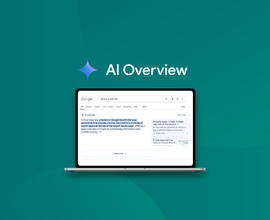How (And Why) to Do a Content Gap Analysis
How do you do a content gap analysis? We've got the scoop. See how (and why) this leading analytics firm completed a content gap analysis.
In the land of the blind, the one-eyed content marketer is king. Which is to say, the more you understand the gaps in your content, the more you can plan to fill them. Without a thorough content gap analysisContent Gap Analysis
A content gap analysis is a strategic method for checking and optimizing the content of a website.
Learn more, you won’t be able to fill in the blanks in the bevy of answers you provide to customers.
Too often, we plow through content creation without stopping to think of our blind spots. A content gap analysis helps us change that.
Start you gap analysis engines...
What is a content gap?
There are a couple different kinds of content gaps that can show up in a content gap analysis.
- Gaps along your customer journey
- Gaps where you’re not addressing certain personas
- Gaps where you’re not creating content about certain products or initiatives
The answer is to use a formal, structured approach to content gap analysis. Fort Worth-based analytics firm, Buxton , has a stellar approach to content gap analysis, so we’ll let them do the evangelizing.
“Gap analysis has given us the power to be more strategic,” says Buxton’s Kelsey Maurer. “Sometimes people say, ‘we’ve got to do a campaign, we need to get in front of these people right now,’ but we can say, ‘let’s think about the end goal, and figure out how we can use the buyer’s journey.”
In fact, Buxton’s content team found their new understanding of their content pipeline from the gap analysis so empowering that they added an entirely new persona to their targeting.
And don’t forget the most important people: your customers. If you don’t have your content fully fleshed out along the customer lifecycle, you’re not serving them as best you could. A gap isn’t just a gap — it’s a person who isn’t getting what they need. When you fill it, you’ve given that person something of true value. That's what a content gap analysis is all about.
So how do you do it?
Content Gap Analysis Step 1: Define Your Target Audience
The first question to answer when doing a content gap analysis is “gaps between what?” Who are the personas you’re seeking to serve? What are their verticals? How do you break down the customer lifecycle? Without clearly defined goals, the process will always a mess.
For Buxton, embarking on their gap analysis journey involved a definitive shake-up of their persona profiles. As a result of the content gap analysis, two personas — strategist and analyst — were merged into one, and a new “executive” persona was introduced. That allowed for a targeted focus on a whole new suite of pain points for a vital, previously unaddressed audience.
Content Gap Analysis Step 2: Talk to Your Internal Teams
A thorough content gap analysis is a huge boon to internal stakeholders — product marketers, sales reps, recruiters, etc. So start with the people right next to you. Ask the ones who’ll be leveraging your content what they have, what they need, and how they’ll use it.
Some samples questions you might ask are:
- “Hey Sales Team, what part of your cycle do you wish you had more collateral for?”
- “Hey Product Marketing Team, how’s our educational, affinity-building content looking?”
- “Hey Customer Service Team, what process-based content do you wish you could send to clients?”
For Buxton, communication with Sales was a critical part of the gap analysis process, and the site of one of the biggest payoffs. “[The gap analysis] has given us an opportunity to work with sales to help buyers through the cycle if they’re starting to consider us but maybe aren’t ready to talk,” says Maurer. “It’s given us the fuel we need.”
Content Gap Analysis Step 3: Do a Content Audit
The phrase “content audit” might be enough to make you hide under the covers. But it doesn’t have to be. There are plenty of streamlined processes out there for making audits effective and painless, whether you need answers for the enterprise level, are looking for a free template, or just need answers. And you will need the granular information from the audit to conduct a successful gap analysis.
It’s worth noting that you don’t have to do this alone. Buxton worked closely with their agency, Gigantic, alongside Conductor to get it done.
Content Gap Analysis Step 4: Act, Measure, Repeat
Buxton uses Conductor to track what content they have in which stage of the customer lifecycle and how that content performs over time. The technical side of things can be done in-house or deployed by an agency — longtime Buxton partners Gigantic and Persuasive Data developed and integrated an element on each web page that allowed Conductor’s technology to create a map of all their content. The tool helps Buxton collect and measure the customer, persona, and content performance data from organic web searches, as well as content gap analysis.
However you want to measure your content coverage and performance, make a habit of doing a regular content gap analysis to identify which personas need what content for what purpose. What gets measured gets managed, and there’s nothing more important than the management of your content offerings.
If the prospect of identifying gaps in your content seems intimidating, just think of it as an opportunity, not a condemnation. After all, people are clamoring for your solution to their problem — this is how you give it to them.







